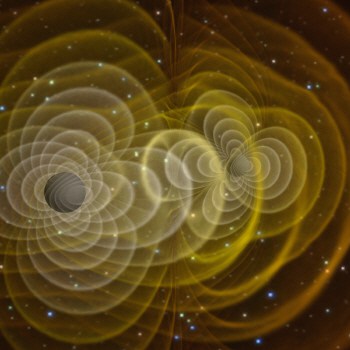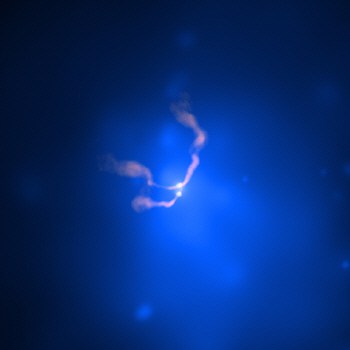Einstein's general theory of relativity might be over 90 years old, but it is only recently that many of its implications can be explored thanks to advances in computing power. This is because its complex nonlinear equations -- which describe how space--time is curved by matter and therefore how matter moves in a gravitational field -- cannot be solved exactly, even for the simplest situations.

Now, Joan Centrella and co-workers at NASA’s Goddard Space Flight Center have made an important breakthrough in numerical relativity by simulating what happens when two black holes merge. These extraordinarily powerful events, which occur in the final stages of a galactic collision, produce copious gravitational waves or “ripples” in space–time.
A central prediction of general relativity, gravitational waves are yet to be detected directly. But the new NASA simulation reveals precisely what the gravitational wave signature will look like for a specific astrophysical process (figure 2). Performed on the Columbia supercomputer at NASA’s Ames Research Center in California, the simulation was the result of translating complex mathematical expansions of Einstein’s field equations into many thousands of lines of computer code.
Combined with observations from gravitational waves detectors such as the Laser Interferometer Gravitational Wave Observatory (LIGO) in the US or the future space-based detector LISA, the work will enable physicists to test general relativity even more precisely.
“Black hole mergers are by far the most powerful events occurring in the universe, with each one generating more energy than all of the stars in the universe combined,” says Centrella. “Now we have realistic simulations to guide gravitational wave detectors coming online.” The researchers are now extending their simulation to model mergers between black holes with different masses.





